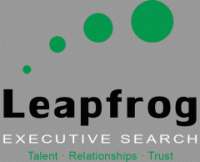Want to influence, drive change, advance your career? We asked our friend, Joe Jordan of Jordan Development, Inc. to share some thoughts around getting your CEO to listen to you, at what can be critical junctures in your career.

Click here to learn more
It is discouraging, frustrating, and even career limiting. You get a strategic opportunity to meet with the senior executive team to present a new initiative for inclusion in the coming budget cycle. You carefully prepare your thoughts. You create captivating slides to support your presentation. You rehearse in preparation for your single chance to make your case.
About five minutes and two slides into your presentation, the CEO interrupts. “We’re a little short on time. Where is this going and what exactly do you want? What is the expected outcome from the investment?”
You jump to your last slide and quickly explain how much you need and offer some anticipated results. The CFO responds with, “There are a number of priorities competing for funding next year. After we determine how well this aligns with our business objectives, we’ll see what we have to work with. Thanks for your time.”
That scene is repeated dozens of times a day. How can you keep it from happening to you?
Develop your business acumen. Business acumen is the ability to use financial, sales, operational, and human capital data to gain perception into an organization and make decisions that will lead to positive outcomes. Senior leaders use business acumen to formulate strategy, balance the drivers of business success, recognize critical interdependencies, and maintain a global, long-term mindset in how they approach the business. If you want to be heard in the C-suite, become fluent in the universal language of business. Know the business well enough to be able to position and explain any subject with regard to how it impacts cash flow, growth, expenses, and profitability.
Read Seeing the Big Picture, by Kenneth Cope or What the CEO Wants You to Know by Ram Charam to quickly enhance your ability to speak the universal language of business.
Think like an executive. The dynamic forces and rapid changes in global business environments create a demand for people at all levels of an organization to look at a business, evaluate information, and approach business decisions from the perspective of a senior executive. All senior executives share one thing in common-they live in a time-pressed environment where they quickly evaluate the information they receive and use that information to make decisions. If your CEO earns half of the average for a CEO in the U.S., his or her time is worth about $65 a minute. Living in a time-constrained world naturally encourages executives to be impatient. They quickly lose interest in or completely disengage from a meeting they feel is irrelevant or not using their time effectively. Executives are inherently skeptical. Their bottom-line focus naturally makes them look for the flaw in an argument before they explore the benefits.
Change the way you present. In an executive meeting, it is imperative that the first minutes clearly communicate the business alignment, strategic relevance, quantified value, and cost effectiveness of any recommendation or request. When you communicate with an executive, grab their attention in the first 30 seconds of your meeting. Be clear in how your topic aligns with the company’s highest priorities. Provide a point-of-view. Offer a fresh perspective on what is happening across the enterprise.
Traditional communication is structured like an inverted pyramid. The back-story, foundational arguments, research, and other data are used to create a context for the conclusion of the presentation, request, or discussion. Effective communication with an executive is structured like a pyramid. A small amount of research is referenced to show the presenter has prepared for the meeting. Then, the point or conclusion of the conversation is made first-usually in the first five minutes of the meeting. Detail is offered as needed. The pyramid approach ensures that if a meeting is cut short (as is often the case), the most critical information and call to action have been shared.
Senior leaders invest their time with people that bring them value. If your CEO won’t listen to you, perhaps you have not yet demonstrated you can tangibly impact what is important in his or her world. Develop your business acumen. Learn to think at the level of a senior leader. Speak and present in a way that concisely makes a point that is relevant and focused on business outcomes.

